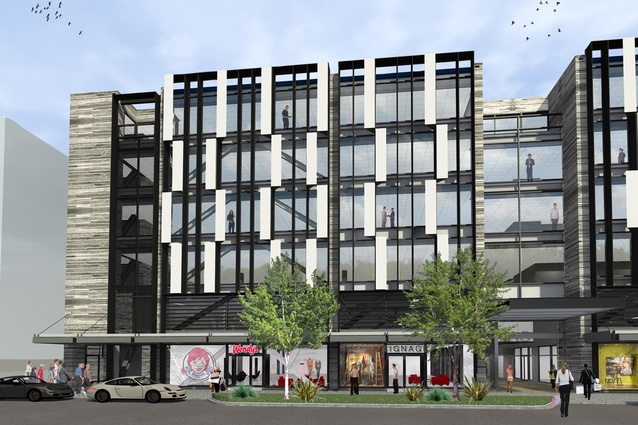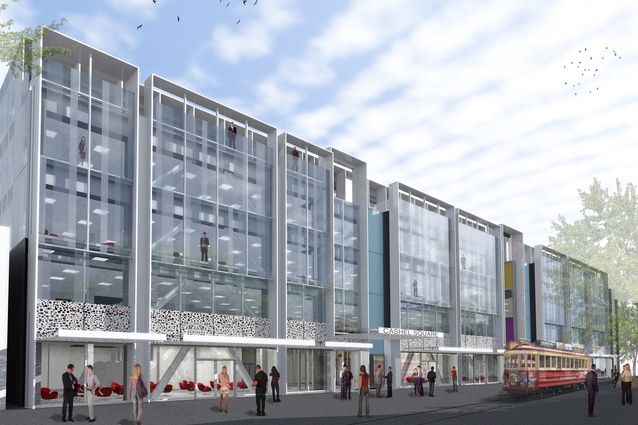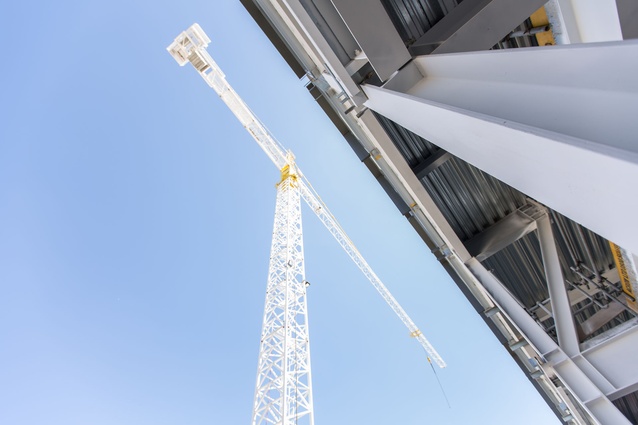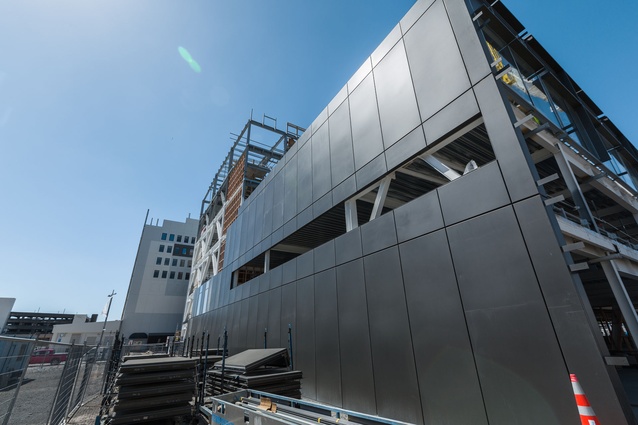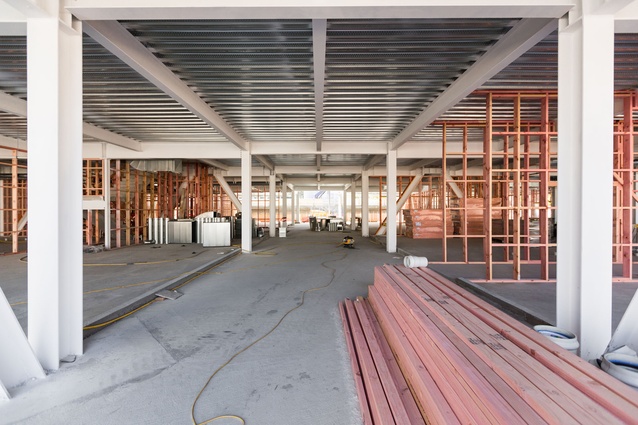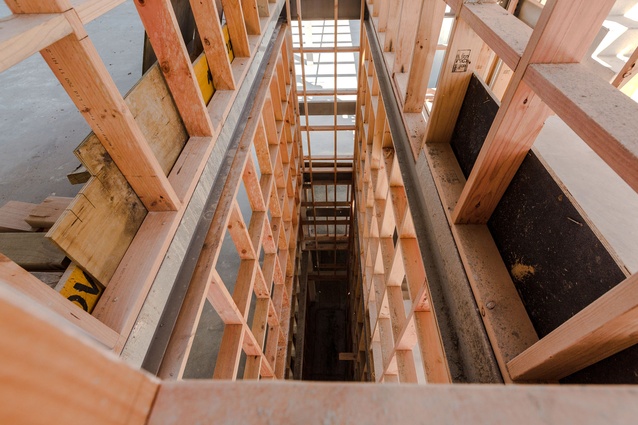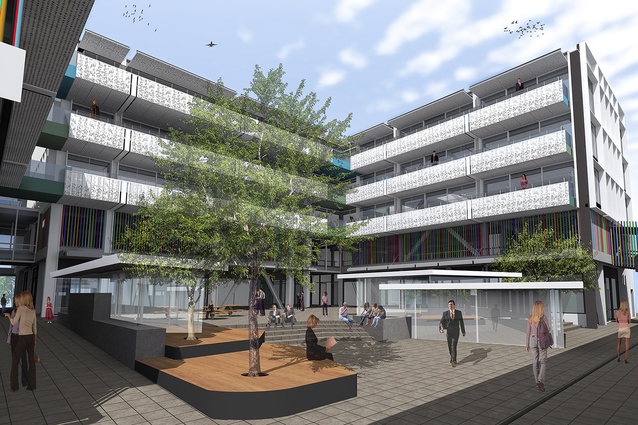Cashel Square
The BNZ Centre, Cashel Square is a central Christchurch anchor building that will house a number of private and government tenants.
“It is significant that the government has committed to taking space in the central city and that has been fundamental to getting the project underway,” Leighs Construction project manager Carl Goldermans said.
The BNZ has naming rights to the complex, which is being built in two stages and will cover nearly half a city block. It will feature two multi-story buildings around a public square, a glass-roofed atrium, and laneways running through to the City Mall and The Terraces river precinct. The popular container mall, Re:Start, which occupied part of the site has relocated across the road.
At the time of interviewing, the structure of stage one (six storeys) was 90 per cent complete and the contractor was beginning to install the wall cladding and building services. Stage two (five storeys) is about eight months behind stage one, with ground remediation work completed and work beginning on the foundations.
The complex includes ground floor retail across all of the buildings with a first level car park and three or four levels of office space above.
Ground improvement using rammed aggregate piers (RAPs) has been completed beneath the new BNZ Centre. The RAPs, which are vertical elements of highly compacted gravel, have been installed at 2.0m centres across the entire footprint of the building to densify the existing ground conditions and mitigate the liquefaction hazard.
The method of installation uses a patented displacement mandrel and a direct vertical ramming process to construct RAPs by vertically ramming thin lifts of aggregate to form RAPs of high strength and stiffness.
The technique improves poor soils, such as loose sands and gravels, soft silt and clay, uncontrolled fill, contaminated soils, soils beneath the groundwater table and soils susceptible to liquefaction.
For multi-storey buildings, a significant design consideration is the resistance of tension loads generated during an earthquake.
In Christchurch RAP tension elements known as tension RAPs, have been constructed with steel elements during the installation process to provide resistance to the significant uplift and tension demands on the building.
These comprise traditional RAP elements with a flat steel base plate and steel bars connecting the base plate to the building foundation.
“This is the first time tension RAPs have been used in New Zealand. They are specifically designed to resist large uplift demand on buildings and to assist the structural engineers’ refinement of foundation design,” Golder Associates construction manager Alex Baldwin says.
“We developed a safe and efficient method of installing the tension RAPs during a trial period at the beginning of the project. We were able to adapt the RAPs to suit highly variable ground conditions across the site, which were typical of alluvial floodplains. There were also significant thicknesses of compacted demolition rubble on the site.”
Structurally, the buildings are steel framed with a Comflor system. The curtain wall cladding system is a combination of glazed windows and composite aluminium panels.
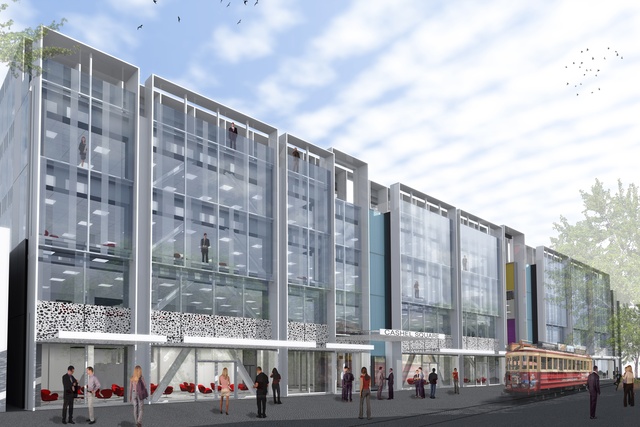
“The large Hereford Street façade has been broken down into three main elements and then further broken down with fins and sunscreens to give it more of a human scale,” Geldermans says.
“The depth of the fins and sunscreens changes the dynamics of the building as you are walking past it; the intention is that pedestrians are drawn towards the building and the laneways.”
Contrary to some public perceptions, he said glass doesn’t fall out in modern buildings.
“The frames have seismic tolerances to allow for a worst case earthquake and all the glass
is strengthened.”
Leighs Construction has had a long working relationship with the site developer Lichfield Holdings and was involved early in the process through a negotiated contract with the developer.
“We have been involved all the way through, managing the cost and taking an active role in the design process to ensure its viability. A lot of concern has gone into getting the street appeal of the building right so it is both economical and fits within the urban landscape. A significant feature is that it has all been built around a landscaped courtyard – three buildings with intersecting laneways and arcades coming in, which tie in with the existing area and will also tie in with the terraced development along Oxford Terrace, through to Ballentynes and linking back to Cathedral Square.”
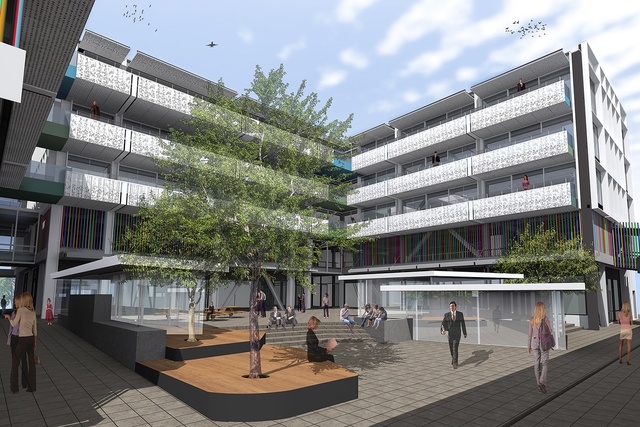
He said they are building in an extremely busy market with a range of sites on the go and that being well organized is crucial to attracting the right people on board.
“We have worked hard with sub-contractors and suppliers to ensure their availability. We need to make sure it is a well run site that they want to come and work on.”
They look for the ability to deliver as well as price, so when local contractors were heavily committed they ordered the steel for stage one at a “very competitive price” from Australia.
Fabrication of the steel for stage two is a joint venture between a New Plymouth and a Hamilton company.
The first tenants will move into stage one by Christmas 2015 and stage two by Christmas 2016 – all 30,000m2 of brand new office, retail and parking space is built to 100 per cent of the Building Code.

